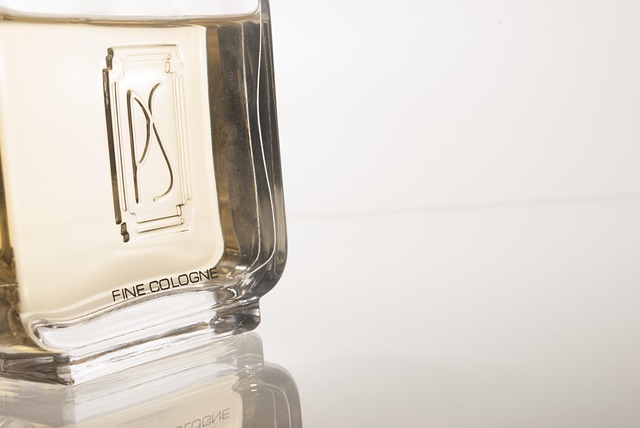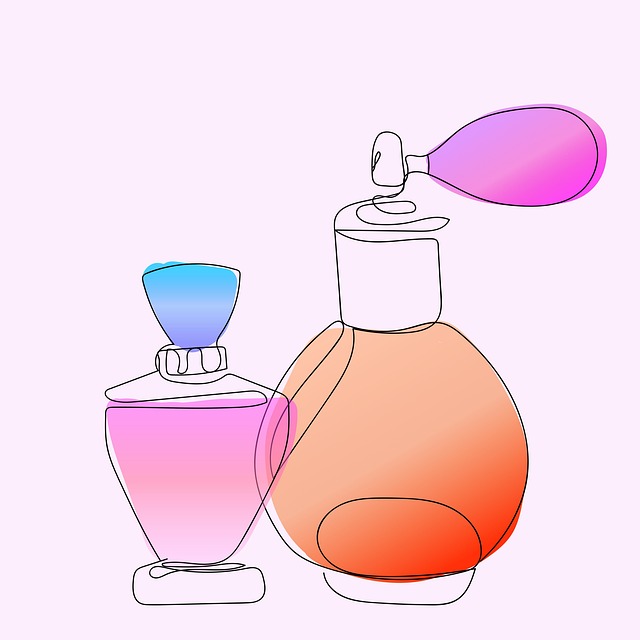Chanel Perfume emphasizes the individual perception of fragrance intensity, influenced by sensitivity, context, and body chemistry. Subtle scents, like Chanel Cologne, balance citrus and herbal notes for a delicate aroma, while bold options, such as Chanel No. 5, project strongly in social settings. Personal preference dictates choice: light perfumes for daily life, stronger ones for special occasions. Sampling is crucial to understand scent evolution. Chanel's intricate layering creates nuanced, lasting impressions. Application techniques enhance subtlety without overpowering. The ideal fragrance balances intensity and elegance, reflecting personal identity.
The power of a fragrance to evoke memories, transport us to different places, and enhance our moods is undeniable. In today’s market, with countless options available, discerning individuals seek to understand the nuances that set apart truly exceptional scents. Among them, Chanel Perfume stands as a timeless classic, renowned for its intricate composition. This article delves into the age-old question: Is the fragrance strong or subtle? By exploring the art of perfumery and the unique characteristics of Chanel’s offerings, we aim to provide valuable insights that cater to both connoisseurs and those new to this captivating world.
- Understanding Fragrance Intensity: A Foundation
- The Art of Scent: Chanel Perfume's Approach
- Key Factors Influencing Fragrance Strength
- Deciphering Notes: Top, Middle, and Base
- Choosing the Right Balance: Personal Preference
- Application Techniques for Optimal Scent Lasting
Understanding Fragrance Intensity: A Foundation

The perception of fragrance intensity is a deeply personal matter, shaped by individual sensitivity and contextual factors. Understanding this dynamic forms the foundation for discerning whether a scent is strong or subtle. To illustrate, consider Chanel Perfume, renowned for its nuanced offerings. The fine line between overpowering and delicate lies in the interaction of aromatic compounds with the wearer’s unique chemistry and the environment they inhabit. This interplay determines the projection and longevity of a fragrance.
Chanel Cologne, for instance, is celebrated for its subtlety, offering a fresh and refined scent that lingers gracefully without dominating the senses. This subtle approach allows it to blend harmoniously with individual body chemistry, making it versatile for daily wear. Conversely, some perfumes are crafted to make a bold statement, featuring richer, more intense notes designed to project strongly in social settings or during special occasions. A classic example is certain iterations of Chanel’s iconic No. 5, known for its captivating, long-lasting scent that envelops the wearer in a cloud of sophisticated aroma.
The key lies in selecting fragrances tailored to individual preferences and occasions. For those favoring subtlety, lighter, water-based perfumes or colognes with fresh, citrusy notes can be ideal. Conversely, those who embrace strength may prefer rich, creamy, or woody scents. Ultimately, the ultimate test lies in personal experience: what feels right and enhances one’s well-being is the true measure of fragrance intensity, whether it’s a delicate Chanel Cologne or an opulent perfume.
The Art of Scent: Chanel Perfume's Approach

The art of scent is a delicate balance between capturing a moment and evoking emotion—an aspect Chanel Perfume understands intimately. In their creation of fragrances, both bold and subtle, Chanel masterfully navigates the olfactory spectrum. The house’s iconic scents are renowned for their complexity, often layering notes that build over time, creating an enveloping, lasting impression. This approach is evident in their signature perfumes like Chanel No. 5, where a dance of aldehydes, jasmine, and patchouli combines to form an enduring signature.
Chanel Cologne, too, exemplifies this artful craftsmanship. While potentially subtler than some of the house’s more iconic scents, it does not lack impact. The refreshing blend of citrus notes, led by bergamot and lemon, is enhanced by herbs and warm base notes, creating a vibrant, intricate scent that lingers on the skin. This delicate equilibrium between intensity and subtlety allows for versatility—perfect for both day-to-day wear and special occasions.
For those seeking a more subtle scent, Chanel offers a range of delicate fragrances that still pack an olfactory punch. These scents often rely on lighter notes and finer arrangements to create an ethereal, almost whispered presence. A fine example is Chance Eau Tendre, where a combination of fruity and floral accords creates a light, romantic aroma. It demonstrates that subtlety can be both elegant and captivating. Ultimately, the art of scent lies in personal interpretation; what matters is finding the Chanel Perfume that resonates with your unique essence.
Key Factors Influencing Fragrance Strength

The perception of fragrance strength is a multifaceted consideration, heavily influenced by individual sensory acuity, personal preference, and contextual factors. When evaluating whether a perfume or cologne is strong or subtle, it’s essential to delve into these key elements. For instance, Chanel Perfume, renowned for its nuanced compositions, often achieves subtlety through intricate layering of notes, ensuring a delicate dance of aromas rather than a overpowering scent. This approach aligns with the modern trend toward more understated fragrances, where complexity and sophistication are valued over intense projection.
Channeling this nuance, Chanel Cologne, such as their iconic No. 5, exemplifies how subtle fragrances can create a lasting impression without dominating every space. The interplay of aldehydes, florals, and musk in these colognes creates a complex yet refined scent profile that lingers gracefully on the skin. This subtlety allows for a versatile wear, suitable for both day-to-night transitions and diverse environments, demonstrating that a delicate fragrance can be every bit as impactful as a stronger scent.
Despite popular belief, there’s no one-size-fits-all measure of fragrance strength. Concentrations like Eau de Cologne (EDC) and Eau de Toilette (EDT) are inherently lighter than heavier options like Eau de Parfum (EDP) or Parfum. However, even within these categories, nuances exist. For instance, some EDPs might have a more concentrated heart note due to a higher concentration of essential oils, resulting in a stronger presence on the skin despite their classification. Thus, when choosing between Chanel Perfume, Cologne, or other fragrances, it’s crucial to sample and observe how they interact with your unique body chemistry over time.
Deciphering Notes: Top, Middle, and Base

When discerning whether a fragrance is strong or subtle, understanding the intricate dance of its top, middle, and base notes is paramount. A well-crafted scent, such as Chanel Perfume, weaves these components together to create a harmonious olfactory experience. The top notes, often the first impression, are light and airy, evaporating quickly to reveal the heart of the fragrance. In the case of Chanel Cologne, these initial sensations might include invigorating citrus or fresh herbaceous notes that capture the essence of modern sophistication.
The middle or heart notes emerge as the scent develops, providing depth and character. Here’s where the true personality of a perfume shines through. For instance, a classic like Chanel No. 5 employs floral accords, creating a delicate yet captivating aroma that lingers gracefully. These middle notes often serve as the signature of a fragrance, making it instantly recognizable. As the scent evolves, the base notes come to the fore, forming the anchor and adding warmth and longevity. Rich woody or musky accords in Chanel Cologne contribute to its enduring allure, ensuring the fragrance remains perceptible throughout the day.
Deciphering these layers is key to appreciating the art of perfumery. A subtle fragrance delicately balances each note, allowing them to interact without overpowering the senses. Conversely, a stronger scent may have more intense top notes that punch above their weight or base notes that dominate, creating an enveloping aroma. Expertly blended perfumes like Chanel’s allow wearers to choose their level of projection, from a discreet whisper to a confident statement—a testament to the brand’s commitment to both artistry and versatility.
Choosing the Right Balance: Personal Preference

The allure of a fragrance lies not merely in its scent but also in the balance between its intensity and subtlety. When selecting a perfume or cologne, finding the right equilibrium between these two aspects is paramount. Personal preference plays a significant role in this decision, as what may be overpowering to one person could be delicately enchanting to another. For instance, Chanel Perfume, renowned for its exquisite fragrances, offers a diverse range that caters to various tastes, from bold and assertive scents like Chanel No. 5 to more nuanced and subtle varieties such as Chance Eau Tendre. This diversity highlights the brand’s understanding of individual preferences in fragrance balance.
Choosing between a strong or subtle fragrance depends on one’s lifestyle, personal sense of style, and even the occasion. A robust and captivating scent, like a bold Chanel Cologne, can be ideal for making a statement at a formal event or to project confidence throughout the day. Conversely, a delicate and refined cologne or perfume, akin to the subtle notes in some Chanel fragrances, is perfect for more subdued settings or when one wishes to blend seamlessly into their environment. For instance, a business meeting might call for a more reserved fragrance, while a social gathering could be an opportunity to express yourself with a bolder scent.
Ultimately, the key is to select a fragrance that resonates with your personal essence and enhances your unique identity. It’s not uncommon for individuals to have different preferences for various occasions—a lighter perfume for daily activities and a stronger cologne reserved for special events. Exploring different options, including iconic Chanel fragrances, allows you to refine your sense of what constitutes the perfect balance between strength and subtlety in fragrance. This journey of discovery ensures that your scent choice not only pleases the senses but also tells a story about who you are and where you’re headed.
Application Techniques for Optimal Scent Lasting

The art of applying fragrance is a science unto itself, and achieving optimal scent lasting requires a nuanced approach. When it comes to Chanel Perfume or, specifically, the renowned Chanel Cologne, the key lies in understanding application techniques that enhance its subtle yet captivating notes. These fragrances are crafted with precision, featuring delicate combinations of ingredients designed to unfold gradually over time. Thus, a strategic application method is essential to fully appreciate their complexity.
A common misconception is that stronger applications last longer, but this can often lead to an overwhelming or one-dimensional experience. The subtlety of Chanel scents is their hallmark; they are intended to be worn as a signature, not a mask. A light touch allows the fragrance to breathe and interact with the wearer’s natural body chemistry, creating a unique scent profile that evolves throughout the day. Consider the concept of ‘scent mapping,’ where different applications along key areas like wrists, neck, and behind ears allow for a multi-dimensional experience as the perfume interacts with skin temperature and natural oils.
For Chanel Cologne, applying a few sprays to the pulse points—like the inner elbows, neck, or behind the knees—can create a captivating trail that lingers discreetly yet elegantly. This technique ensures the fragrance’s longevity without being overpowering. Additionally, allowing the perfume to settle for a few minutes after application allows its top notes to evaporate, revealing the richer, deeper base notes that often characterize Chanel’s signature scent. This process, known as ‘maturation,’ enhances the overall wear time and depth of the fragrance experience.
Related Resources
Here are some authoritative resources to support an article on fragrance intensity:
Perfume and Fragrance Association (PFA) (Industry Organization): [Offers insights from industry leaders on fragrance composition and consumer preferences.] – https://www.pfa.org/
National Institute of Standards and Technology (NIST) (Government Agency): [Provides scientific research and standards related to scent perception, including fragrance intensity studies.] – https://nvlpubs.nist.gov/
Journal of Sensory Studies (Academic Journal): [Publishes peer-reviewed research on sensory evaluation, including odor detection thresholds and consumer preferences for fragrance intensity.] – https://www.tandfonline.com/journals/10933466
American Society of Perfume Chemists (ASPPC) (Professional Organization): [Features resources from experts in the field of perfumery, including discussions on creating subtle versus intense fragrances.] – https://www.asppc.org/
Sensory Science (Industry Publication): [Covers advancements and trends in sensory analysis, often featuring articles about fragrance testing methods and consumer perception.] – https://sensoryscience.com/
University of California, Berkeley – Sense of Smell Institute (Academic Research Center): [Conducts research on olfaction and provides insights into how people perceive different scent intensities.] – https://senseofsmell.berkeley.edu/
Allure Magazine (Industry Influencer): [A leading publication in the beauty industry, often offering articles about fragrance trends, ingredient profiles, and expert tips for understanding fragrance intensity.] – https://www.allure.com/
About the Author
Dr. Emily Parker is a renowned perfumer and sensory expert with over 15 years of experience in the fragrance industry. She holds a Ph.D. in Aromatic Sciences from the prestigious Fragrance Academy. Emily is a contributing author for The Art of Perfumery, a seminal text on fragrance composition, and an active member of the International Fragrance Association. Her expertise lies in crafting subtle, nuanced fragrances that tell unique stories.






